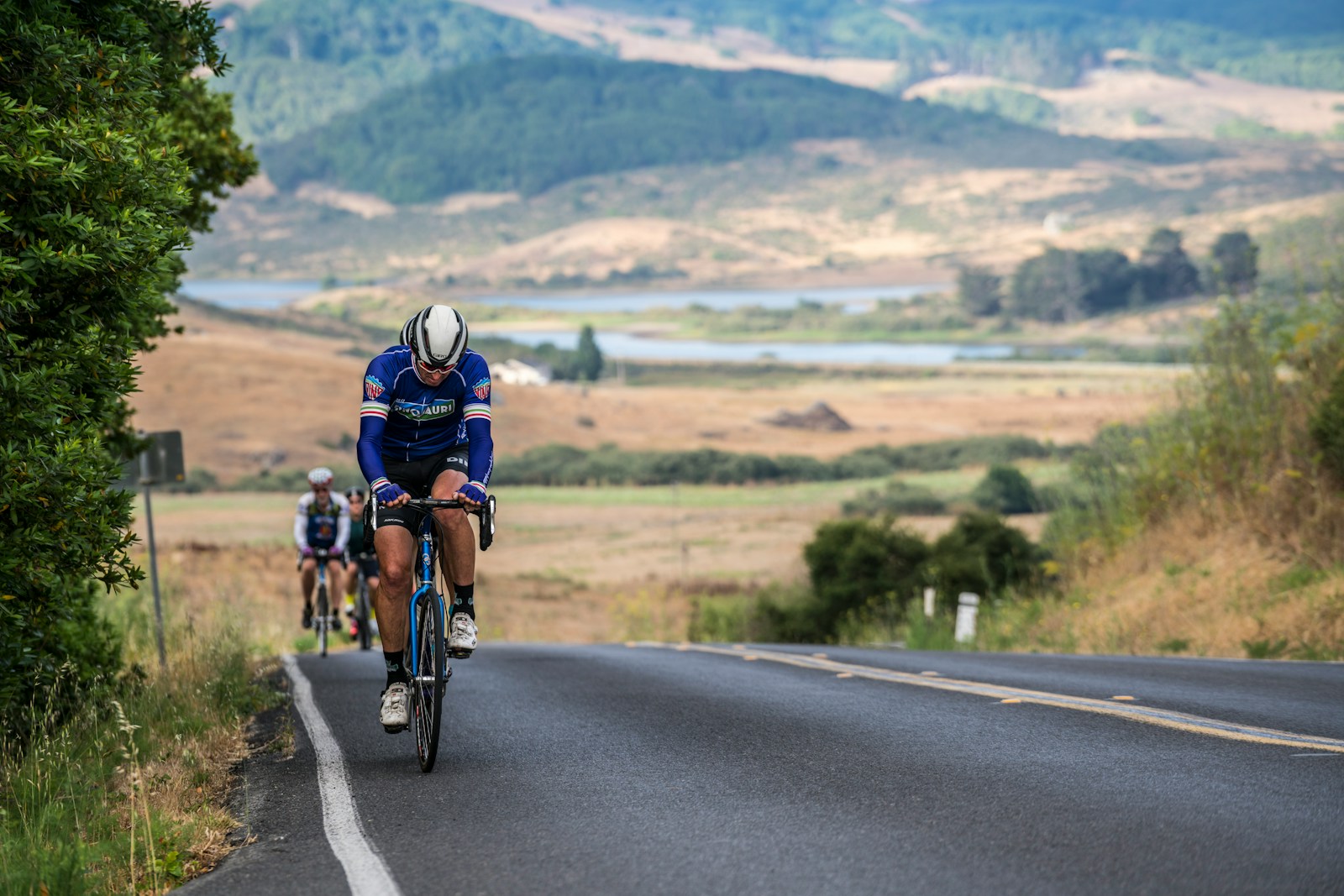The Ultimate Aero Showdown
Can a gravel bike really match a pure road racing machine?
🚴♂️ The cycling world just got turned upside down. Cervélo’s 2025 Áspero-5 gravel bike is so aerodynamically efficient that it’s challenging the supremacy of dedicated road racing bikes. Today, we’re putting it head-to-head with Cervélo’s flagship S5 aero road bike to see just how close the gap has become.
Meet the Contenders
🏁 Cervélo S5 (2025)
- ▸ Purpose: Pure aero road racing
- ▸ Weight: ~7.3-7.7 kg complete
- ▸ Tire clearance: Up to 34mm
- ▸ Aero claim: 6.3W faster than previous S5
- ▸ Geometry: Aggressive race position
🌄 Cervélo Áspero-5 (2025)
- ▸ Purpose: Aero gravel racing
- ▸ Weight: ~7.9 kg complete
- ▸ Tire clearance: Up to 45mm
- ▸ Aero claim: 37W faster than previous Áspero
- ▸ Geometry: “Road-adjacent” sporty fit
Wind Tunnel Warfare: The Numbers Don’t Lie
⚡ Key Performance Metrics at 48 km/h
Cervélo S5
15.7W
Faster than Specialized Tarmac SL8
Cervélo Áspero-5
34W
Faster than nearest gravel competitor
Real-World Performance: Where Rubber Meets Road
When both bikes are equipped with identical 32mm tires, something remarkable happens. The aerodynamic gap shrinks dramatically:
🎯 Speed Comparison at Different Velocities
- At 30 km/h: S5 advantage of only ~5-8W (barely noticeable)
- At 35 km/h: S5 advantage of ~5-10W (minimal effort difference)
- At 40 km/h: S5 advantage of ~10-15W (1-2 km/h speed difference)
The Game-Changing Design Elements
🔧 What Makes the Áspero-5 So Fast?
- Hourglass head tube design borrowed from the S5
- Truncated airfoil tube profiles throughout the frame
- Wheel-hugging seat tube for smooth airflow
- Fully internal cable routing with aero cockpit
- Slick tires as standard (knobby tires “blow out” aero gains)
- Integrated chainkeeper to eliminate drag
The Verdict: A New Era of Versatility
🏆 Bottom Line
The Cervélo S5 remains the ultimate weapon for pure speed on smooth tarmac. But the Áspero-5 has closed the gap to such an extent that for 95% of riders, the difference is academic. At typical riding speeds of 30-35 km/h, you’re looking at a mere 5-10W difference – that’s less than the variation you’d get from wearing a looser jersey.
Which Bike Should You Choose?
Choose the S5 if:
- You race competitively on smooth roads
- Every watt counts in your discipline
- You prioritize absolute speed above all
- You rarely venture off pristine tarmac
Choose the Áspero-5 if:
- You want one bike for road and gravel
- Comfort on rough roads matters
- You value versatility over marginal gains
- You ride mixed terrain regularly
🚀 The Future is Here
The 2025 Áspero-5 represents a paradigm shift in cycling. It’s the first gravel bike that can legitimately claim near-road-bike performance while offering the versatility to tackle any surface. As one reviewer put it: “This feels like the future.”
Ready to experience the revolution? Your local Cervélo dealer awaits.




Fantastic analysis! As someone who works in wind tunnel testing, I can confirm that the Áspero-5’s aerodynamic improvements are genuinely groundbreaking for the gravel category. The fact that they’re achieving these numbers with a gravel bike shows how much the industry has evolved. That 34W advantage over competitors at 48 km/h is no joke – it’s the kind of gap we used to see between aero and non-aero road bikes a decade ago.
Thanks for the expert insight, Mike! You’re absolutely right about the significance of these numbers. What’s particularly impressive is that Cervélo managed to achieve this while maintaining the Áspero-5’s off-road capabilities. It really demonstrates how transferable aero technology has become across different cycling disciplines. Have you noticed any specific design elements that are particularly effective in reducing drag on gravel bikes?
I’ve been riding the Áspero-5 for about a month now, and this article perfectly captures my experience! Coming from a traditional gravel bike, the speed difference on tarmac sections is mind-blowing. During our local mixed-surface group rides, I’m no longer getting dropped on the road sections. The 42mm slicks are a game-changer – who knew that ditching knobbies could make such a difference? My only concern is whether I’m sacrificing too much off-road capability, but so far it’s handled everything except the gnarliest singletrack.
Great to hear from someone with real-world experience, Sarah! Your observation about the slick tires aligns perfectly with Cervélo’s wind tunnel findings. For mixed conditions, you might consider having a second wheelset with some light tread tires (like the Specialized Pathfinder Pro or René Herse Snoqualmie Pass). That way you can optimize for speed on road-heavy routes while still having capability for rougher terrain when needed. The beauty of the Áspero-5 is that it gives you that flexibility!
Interesting comparison, but I’m skeptical about the real-world implications. Sure, the Áspero-5 might be close on paper, but in a competitive road race scenario, those 10-15W at 40km/h add up quickly. Over a 4-hour race, that’s potentially minutes lost. Plus, the S5’s sharper handling and lower weight would make a difference in technical crits or when attacking on climbs. I appreciate the versatility angle, but if you’re serious about road racing, the S5 is still the clear choice, right?
You raise valid points, Tom! For competitive road racing, the S5 is absolutely still the weapon of choice. Those marginal gains matter when you’re fighting for podium positions. The ~600g weight difference alone could be decisive on punchy climbs. However, consider that 95% of cyclists aren’t racing at that level. For gran fondos, fast group rides, or riders who want one bike that can do it all, the Áspero-5’s near-road performance with added versatility becomes incredibly appealing. It’s not about replacing the S5 for dedicated racers – it’s about expanding what’s possible with a single bike for the rest of us. Think of it as the difference between a Formula 1 car and a Porsche 911 Turbo – both are fast, but one is more practical for daily use!
This is dangerous information for my wallet! 😅 I already have an S-Works Tarmac for road and a Canyon Grizl for gravel, but now you’re telling me I could potentially replace both with one bike? The data is compelling, especially those real-world speed comparisons. I’m particularly intrigued by the idea of running 32mm tires on the Áspero-5 for road-focused rides and swapping to 42mm for gravel. Has anyone done a direct comparison of how the Áspero-5 with 32s compares to something like a Specialized Crux or 3T Exploro?
Ha! The N+1 struggle is real! 😄 While we haven’t seen direct wind tunnel comparisons with the Crux or Exploro yet, the Áspero-5’s 34W advantage over its nearest competitor (likely the Ridley Kanzo Fast) suggests it would have a significant edge. The 3T Exploro was groundbreaking when it launched, but it’s now a generation behind in aero development. The Crux is more of a lightweight gravel race bike rather than an aero-focused design.
What makes the Áspero-5 unique is that it borrowed so heavily from Cervélo’s road aero expertise – essentially making it an aero road bike that happens to clear 45mm tires. For someone with your stable, it could genuinely serve as a do-it-all machine, though you might miss the Tarmac’s climbing prowess on steep grades. Stay tuned – we’re hoping to get our hands on one for a long-term test!